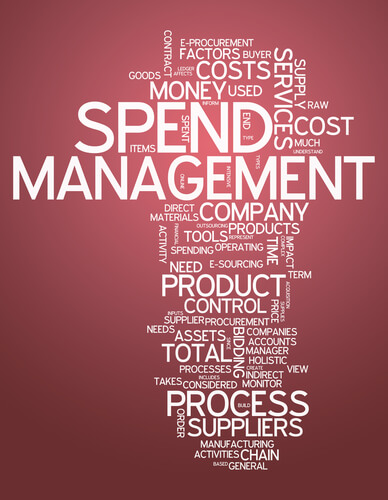Spend Management is a vital element of Supply Chain Sustenance and Effectiveness. The management of spend in an organization falls under the Mandate of its Finance and Procurement Functions.
To elaborate, the mandate of the Procurement Function is threefold:
- Management of Spending
- Supporting of Operations
- Protection of the organization from Risk
One Key Performance Indicator of the Procurement Function is the Total Cost of Ownership (TCO). TCO is calculated by adding the contracted price of a product or service to cost incurred by the supplier creation of delays, defects, rework and non-value add steps. Supplier generated delays, causes of rework, shipment of defects, force non-value-added work are major sources of procurement risks.
The three dimensions of the above-mentioned Procurement Function Mandate are profoundly inter-related. A couple examples of this phenomena come to mind:
I.) The Operations Group of an organization was shipped defective raw materials by a supplier, which resulted in the production of a large quantity of defects. Some of these defects had to be reworked and the rest scrapped. The company incurred additional overhead and labor cost to manage the rework and scrap. Result: an increase in spend and TOC.
II.) Many of the defective products were shipped, causing a huge recall as customers were exposed to significant risks. The cost of the recall was staggering. Result: an increase in spend and TOC.
The average daily cost of the production run was $US60,000. After the rework and recall, the Total Cost of Production that day was $US2,500,000!!
One can deduce that to keep TOC and Risks within acceptable limits, the root causes of spend must the measured, managed and controlled.
Transformation of Spend:
In this article we will examine 3 categories of spend:
- Direct Spend: This category is comprised of the procurement of items that are included in a Bill of Materials for producing finished goods and services. Overhead and Labor Cost that are directly utilized in these activities are also included in this category.
- Indirect Spend:This category includes the procurement of all items that do not go into the direct production of finished goods and services. Maintenance, repair materials, office supplies, are included in this section.
General Tools for the above two categories:
- Spend Profiles
- Strategic Plans
- Buying Plans
- Robust Sourcing Processes
- Robust Metrics
- Integrated Robust but Easy to Use Technology
Transformative Tools for the above two categories:
- Change and Transformation Management Execution Plan
- Value Stream Mapping
- Total Cost of Ownership Tracking Matrix
- Robust Skills Assessment Process, Professional Development, and Certification
- Problem Solving Mechanisms such as Theory of Constraints, Design for Lean Six Sigma, Lean, TQM
- Risk Management Mechanisms such as HACCP, FMEA, Counter Measures Management
- Hidden Spend:This category of Organizational Spend is immense in most businesses but goes vastly untracked. In fact, most managers are not trained to deal with Hidden Spend. Very few elements of this category show up as line or chart of accounts items on traditional P&L Statements; “The most dangerous kind of waste is the waste we do not recognize.” – Shigeo Shingo
Usually both Upstream and Down Supply Chain Processes in organizations today are laden with Hidden Spend that is undetected, unmanaged, and consumes vast amounts of materials, time, and other resources.
Hidden Spend, is often referred to as “The Hidden Factory” and involves the following:
a.) The 8 Deadly Wastes
- Transportation Waste, excessive transportation of materials, people, information
- Inventory Waste, excessive buildups of inventory in a supply chain
- Motion Waste, excessive movement of resources
- Waiting Waste, people waiting, products waiting on something or someone
- Over-Processing Waste, excessive touch points and handling
- Over- Production Waste
- Defects and Rework
- Skills Waste, misuse and underutilization of Human Capital
b.) The 6 Big Losses in Business, mainly from usage of machinery
- Unplanned Stops, waste time and overhead
- Planned Stops, waste time and overhead
- Small Stops, waste time and overhead
- Slow Cycles, waste time and overhead
- Production Rejects, waste time, materials and overhead
- Startup Rejects, waste time, materials and overhead
Often enough, 6 Big Losses are not quantified in terms of dollars and do not show up on P&L Statements. But huge amounts of money are spent and consumed in these activities that do not add value. As far as the 8 waste, up to 60% of activities is an organization are wastes. In some instances, the 3 – 57 Rule is realized, according to this rule, every hour elapsed time a product is worked on for only 3 minutes. What happens to the other 57 minutes? Where is this tracked? What is the actual cost of the 57 minutes in limbo?
Solution:
- Quantify the 8 Wastes and 6 Big Losses and find the Root Causes.
- Design Robust Solutions to close gaps
Metrics:
- OEE % (Overall Equipment Effectiveness) to track the 6 Big Loses.
- Dollar amount of 8 Deadly Wastes.
- COPQ or Cost of Poor Quality
- Risk Priority Number
Transformative Tools:
Spaghetti Analysis, Waste Audit Matrix, OEE Matrix, TPM, 5 Whys, Fishbone Diagram, Time and Motion Analysis, Failure Mode and Effects Analysis.

